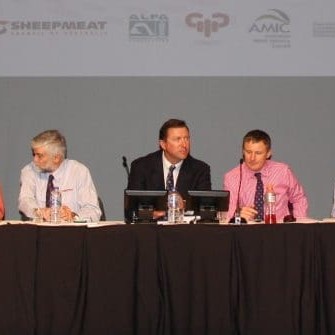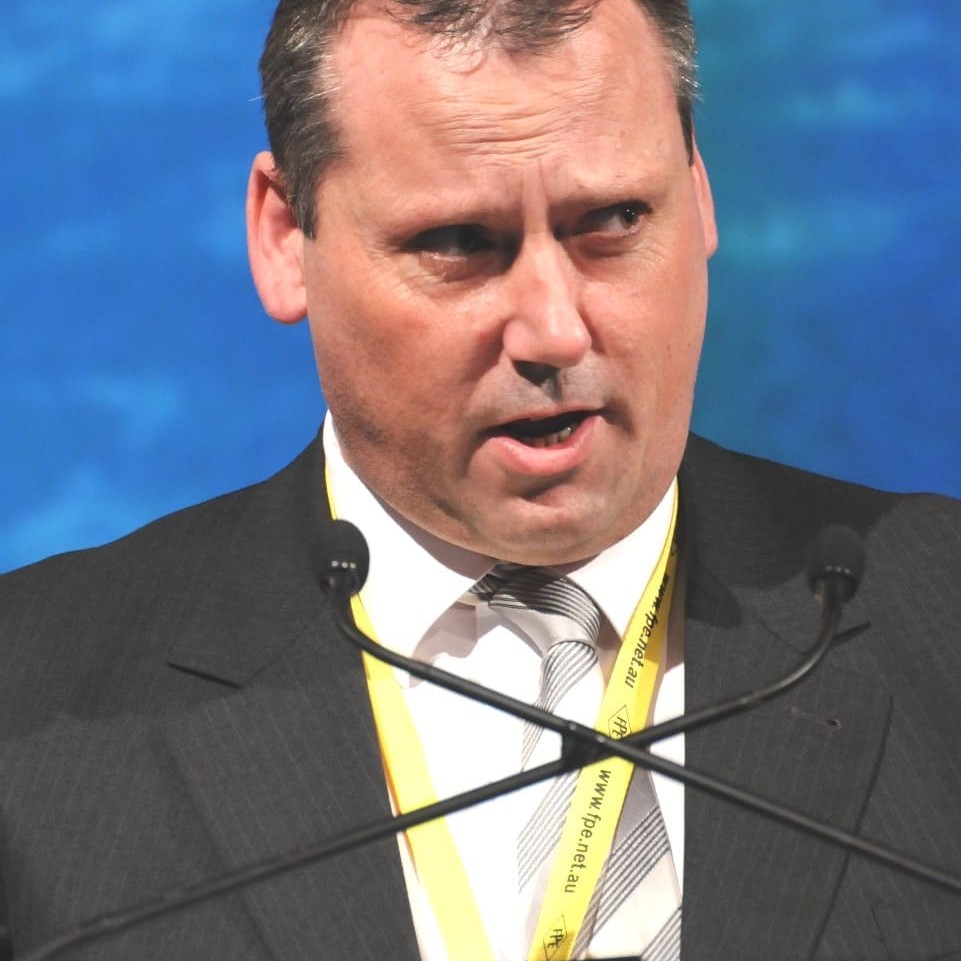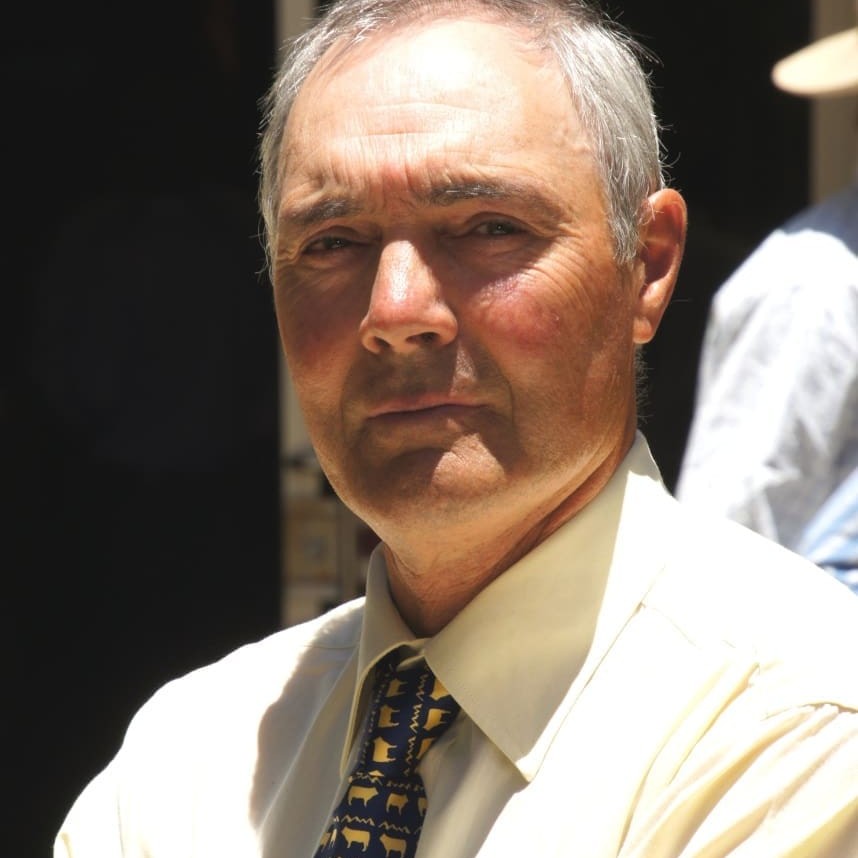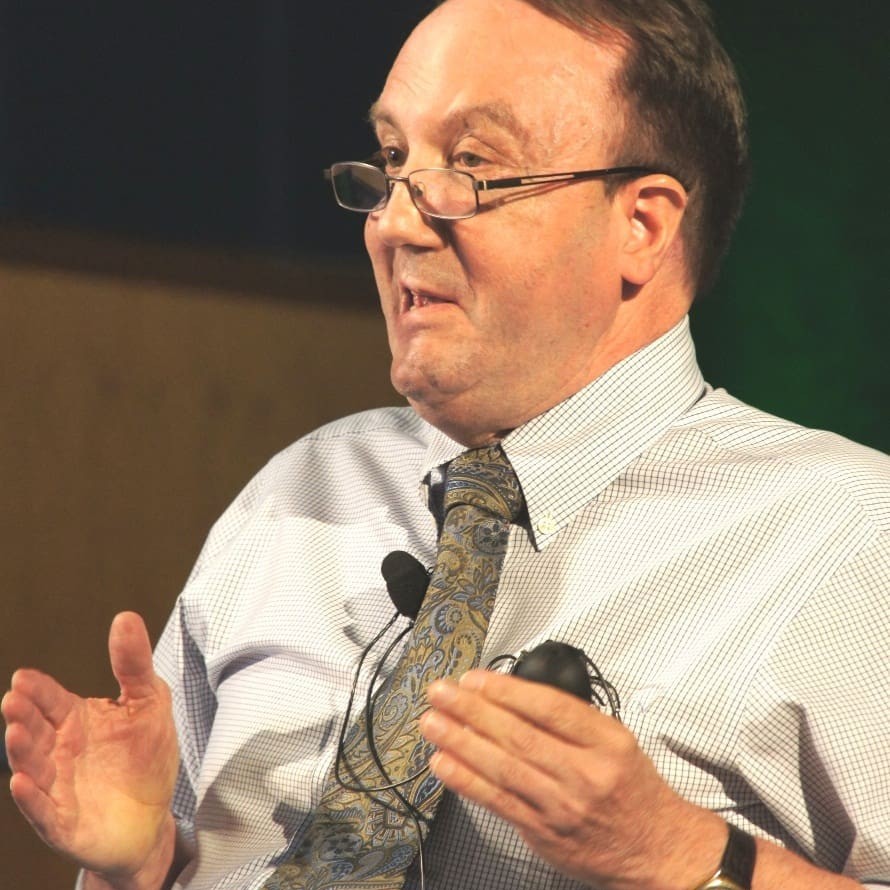
THE apparent disconnect between cattle pricing and what producers are hearing about international beef demand was a strong central theme at a beef producer forum held yesterday morning in Wodonga, prior to MLA’s annual general meeting.
Red Meat Advisory Council chairman Ross Keane chaired the meeting, attended by about 90 grassroots producers, mostly from southern NSW and northern Victoria.
While the meeting was ‘open slather’ on industry topics concerning producers, stakeholders focussed their questions and comments heavily on hip-pocket issues. Little or no interest was shown in industry restructure, Senate Inquiry, grassroots producer representation on Cattle Council, MLA’s operational performance in R&D or marketing, or related topics.
 To provide some background to the Q&A session, each industry peak council delivered a short presentation on issues relevant to their sector.
To provide some background to the Q&A session, each industry peak council delivered a short presentation on issues relevant to their sector.
Australian Meat Industry Council chairman David Larkin outlined the growth opportunities in emerging markets, particularly the massive growth being experienced into China, where exports are likely to exceed 140,000 tonnes this year.
“That’s all fine, but we’re not actually seeing the results of that at farm level,” one stakeholder said. There were also implications from some stakeholders that processors were in some way ‘dragging down cattle prices further than where they needed to be’, due to drought supply pressures.
CCA president Andrew Ogilvie rejected this, saying no rain, no grass and limited water created a severe imbalance in the industry’s supply and demand dynamic this year. There had also been a bottleneck in processing this year, where processors in some regions simply did not have the capacity to handle any more cattle.
 David Larkin also rejected any notion that processors were profit-taking in a bad drought year at the expense of cattlemen.
David Larkin also rejected any notion that processors were profit-taking in a bad drought year at the expense of cattlemen.
While there was a sense of frustration evident among some producers over current cattle prices, he said given the huge volume of cattle that had been pushed into meatworks this year, it was perhaps surprising that cattle prices were in fact not a lot worse than what they are.
“If we hadn’t had the buyer demand from markets like China and others this year, then cattle prices could easily have been 60pc lower than what they sit today,” he said.
“Take it all in context: record cattle turnoff and record beef production – sure prices might be a little lower than the top, but if we didn’t have that demand, the industry would have been a lot worse off,” he said.
“The market for slaughter cattle is all about supply and demand, and when you have supply arriving all at the same time as it has this year, there can be only one outcome.”
“Yes, processors have had a good year this year. But the previous two were squarely in negative profit territory, due to flat international demand, the dollar, lower turnoff and other factors. There needs to be sustainable returns for both producers and processors, and what that means is consistent supply so that we don’t have these disastrous peaks and troughs.”
NT Cattlemens Association president David Warriner said slaughter cattle prices were averaging about 320c/kg, or $1000 to $1200 for a heavy steer, compared with prices 20pc higher, about 400c/kg carcase weight, in 2001.
Mr Larkin pointed to the Eastern Young Cattle Indicator, saying it presented a different story. It had reached a record high of 426c as recently as late 2011, before commencing its current decline due to drought pressures.
With the obvious demand for Australian product around the world, the industry now had its best opportunity in perhaps 30 years to market its product. But he also raised concerns about the industry’s ability to respond to that outlook next year, given what had happened in 2013.
Mr Larkin stressed the importance of moving beyond commodity-based trading and being able to differentiate and value-add our product in international markets as part of the solution.
“From what I know about the export trade, customers will always find product, and if we haven’t got it to ship to them, they’ll go somewhere else. They’ll go to South America and other places, and we potentially lose that opportunity.”
Mr Larkin said more producers needed to build supply relationships with processors, rather than simply dumping cattle into saleyards.
“Building those consistent relationships is key. It’s about branding, marketing, and creating those consistent supply connections and brand loyalty. It’s about knowing your product and where the best return is, and finding those markets that are prepared to pay the best possible return for it.”
Agriculture, and beef specifically, needed to look forward through the windscreen, and not in the rear-vision mirror, he said.
“Australia has a great advantage in the standing of its product in the international marketplace. But we need to use the tools we have to market our product, and our cattle better. Simply sending cattle to the saleyard is little better than betting red or black at the casino.”
During an MLA program operations briefing session later in the day, trade and economic services general manager Dr Peter Barnard described the China beef story that had unfolded over the past 12 months as ‘phenomenal.’
"But to make sure it continues, we desperately need this new Australian government to act on market access and to level the playing field," he said.
"We’ve wasted six years in negotiations with China and Korea on FTAs. The result is that in China we pay 13pc tariffs on our beef while New Zealand with its FTA pays less than 5pc. The new government must desperately get on with the job."
 MLA chair Michele Allan told the industry AGM that cattle prices were down and returns to producers were 8pc lower than last year.
MLA chair Michele Allan told the industry AGM that cattle prices were down and returns to producers were 8pc lower than last year.
She blamed the value of the A$ staying stubbornly high, putting additional pressure on producers and squeezing profit margins right through the supply chain.
In addition, the severe drought in northern Australia plus the lingering effect of the collapse of the live cattle trade to Indonesia had meant saleyards and meatworks across the nation had been flooded with unprecedented numbers of cattle for slaughter.
Peter Barnard told the meeting that the highest processing costs in the world were hampering Australian export processors. It cost $300 to kill a beast in Australia because of high labour, power and regulatory charges, compared with $150 a head in the US, $80 in Argentina and just $25 in China.
Other issues: NLIS, levy, PCAS
 Forum questions on subjects other than cattle pricing and market access were few and far between, but here’s a snapshot of other topics raised.
Forum questions on subjects other than cattle pricing and market access were few and far between, but here’s a snapshot of other topics raised.
There were several questions around NLIS issues, with tag retention again emerging as an issue troubling some producers.
CCA’s Andrew Ogilvie acknowledged the problem, particularly in older cattle. “It’s something that CCA is looking into. We might need to start to look for the ‘next generation’ of NLIS devices, and/or locations other than the ear, where they were subjected to greater risk of loss, that might lift retention performance,” he said.
Another stakeholder asked why, if tag retention continued to be a problem, that rumen boluses were not again being considered as a viable option. Processor retrieval problems in the gut house at the meatworks was again given as the primary reason for lack of wider use of boluses.
The Australian Beef Association asked about progress on what it described as an ‘RMAC industry structural review’. RMAC chairman Ross Keane said the council had never described the process as a ‘structural review’, but its evaluation of industry structures was progressing well, and almost complete.
Another stakeholder raised the point that the current $5 transaction levy was struck at a time of greater industry prosperity and seasonal fortunes, and suggested that alternatives should be considered to allow it to ‘float’ along seasonal/pricing trend lines. CCA said that some of the levy collection/setting processes might change, depending on what might come out of the proposed Senate Inquiry.
The industry’s new Pasturefed Cattle Assurance System was discussed, with questions focussing on the cost involved to join the program, why the accreditation process had to be so ‘onerous’, and why it needs to be audited.
The response from CCA’s Jed Matz was that these conditions were not just ‘plucked out of the air’ by the program’s designers, but were in direct response to customer requirements, making sure there is enough rigour around production claims and specifications.
Central Queensland cattleman Ian McCamley again raised the issue of dentition as a questionable arbiter of meat quality, a topic which will be explored in more detail on Beef Central next week.



HAVE YOUR SAY